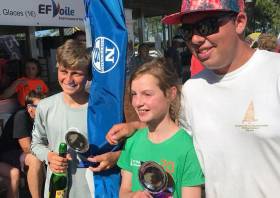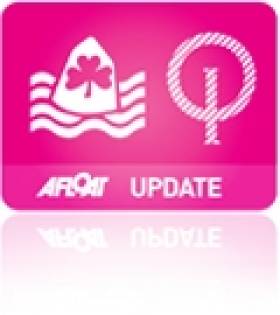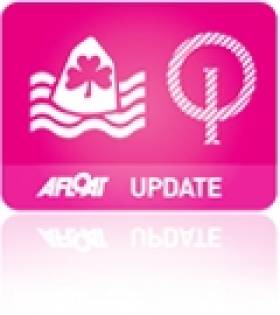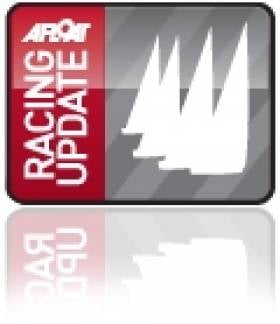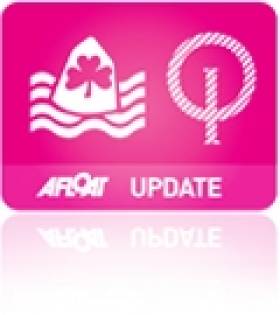Displaying items by tag: Oppy
Irish Sailors Dominate In 2018 Optimist French Nationals
#Oppy - Fiachra McDonnell of the National Yacht Club and the IDT France team won the Optimist French Nationals after a fantastic week of sailing against some of the best sailors in Europe.
Fellow NYC and IDT Team France sailor Clementine van Steenberge won best girl at the event in Carcans, Bordeaux that saw some 200 young sailors taking part.
Continuing Ireland’s winning ways, Afloat’s Sailor of the Month for April, Justin Lucas of the Royal Cork Yacht Club placed second, while his club-mate Harry Twomey finished fourth.
In addition there were four more top 20 places for Ireland at the event: James Dwyer Matthews (RCYC; 13th), Michael Crosbie (RCYC; 14th), Johnny Flynn (Howth YC; 18th) and Rocco Wright (HYC; 19th).
Jessica Riordan of the Royal St George and IDT France Team also finished a very strong seventh in the Silver Fleet.
Fifteen Irish sailors travelled to the French Nationals, seven of them as part of the Irish Development Team France (IDT France) and the rest independently.
The International Optimist Dinghy Association Ireland (IODAI) expressed its thanks to Yvonne Durcan for doing a sterling job as team parent for IDT France during the week, and to team coach Dara O’Shea for his efforts over the last few months to help Ireland’s young Oppy sailors to secure Ireland’s best ever results in France.
Irish Optimist Sailing Team Racing in Dominican Republic
#optimist –After four races sailed and no discard applied Sophie Browne of Tralee lies top Irish boat in 63rd at the 230 boat Optimist World Championships this week in the Dominican Republic.
Hope of Irish success at the Championships is carried by Sophie, Harry Durcan, Douglas Elmes, Megan Parker and Harry Whitaker who are competing at the Optimist World Championships. Qualifying racing began last Wednesday. Vid report above. The event site (not a great one) is here. Preliminary results up to July 20th are downloadable below.
A beautiful day was expecting the 42 teams qualified for the Team Racing today in Boca Chica. The 2 race courses were very close to the Yacht Club and spectators had the opportunity to see the action on first hand.
In Team Racing each team competes with 4 athletes and they have to get the winning finish combination in order to win. More than 30 matches were sailed today and the task for the Jury was very hard.
Finally Singapore, Sweden, Thailand, Brazil, Chile, Peru, Italy, Finland, USA, New Zealand, Nederland, Turkey, Argentina, Spain, Croatia and Germany are the 16 teams qualified to the final series, tomorrow.
Local team had a difficult day and after two losses fro Italy and Poland were quickly off the completion. Singapore seemed to be the team in favor of winning since the won easily their qualification matches against Mexico and Greece.
The weather is expected to be breezier tomorrow with sunny skies, a perfect combination for the Team Racing Finals.
Glenageary's Hyland Takes Tenth at Oppy German Nationals
Broken toe straps were no obstacle for Adam Hyland this week when the Glenageary junior took an unexpected dip in the Baltic. He finished tenth and top Irish boat at the German Optimist National championships. The top result was from a field of 300. Full results HERE.
The 10 strong Irish optimist development team returned on Saturday night after a very successful trip to Kiel for the German Optimist Nationals. In particular Adam Hyland should be very happy with his 11th place in this world class fleet.
The quality of the fleet at the German nationals is much higher than at German oppie sailors have to qualify for the nationals and the top 20% of the German fleet (220 sailors) and with Foreign participants making up the balance of 310. Most of the foreign competitors teams were made up of World team sailors who are excluded from competing in the Europeans.
The Irish team spent 3 days training and acclimatizing to the local conditions with the German, Danish and other worlds teams.
The competitors competed in very mixed conditions ranging from very light to 20k plus.
The Irish Finished as follows:
11th Adam Hyland RstGYC
56th Sophie Brown TBSC/RCYC
75th Sean Waddilove SSC/HYC
77th Robert Dickson HYC
116th Fergus Flood HYC
129th Sean Gambier Ross KYC
139th Alacoque Daly TBSC
152nd Richard Hogan HYC
158th Ronan Cournane KYC/RCYC
204th Dara Cournane KYC/RCYC
239th Aoife Hopkins HYC
Racing Round up: Dun Laoghaire Regatta, ISAF Youths, Optimists, Paralympic, RORC, WIORA, Quarter Ton, Kiteboarding.
In offshore news, the Transatlantic Race 2011 Nears a Finish, and RORC yachts that headed West did best in the St Malo from Cowes race. Ireland's entry in the Tall Ships race, Celtic Mist, is safely in Scotland. WIORA starts this week in Clifden, thirty boats are expected.
Two top Cork performers are in Cowes for this week's Quarter Ton Cup.
In other boating news, rower Siobhan McCrohan won bronze at the World Rowing Champs in Lucerne, Kiteboarding debuted in Dun Laoghaire. There were Medals for Irish Kayakers at Athens Special Olympics.
And finally after a Elaine 'Shooter' Alexander is set for hero's welcome this week as she becomes the first woman from Northern Ireland to circumnavigate the island of Ireland.
All on our home page this morning, thanks for your interest in Irish Sailing and Boating.
Four Oppy Fleets Take to the Water in Crosshaven
Donnelly Wins Dun Laoghaire End of Season Oppy Event
Royal Cork's Peter McCann Takes Early Lead at Oppy Nationals
The 3 sponsored Irish Optimist Nationals got underway today in Dunmore East in County Waterford. A total of 234 boats raced two races in light to moderate North West breezes, remaining steady for the day. Provisional results after 2 races:
Senior: 1st Peter McCann, RCYC, 2nd Aran Hollowell, UK.
Junior: 1st Daire Cournane, RCYC/KYC; 2nd Fergus Flood, HYC.
Regatta: 1st Michael O'Suilleabhain, KYC, 2nd Amy Carroll.
Photos below by Noel Browne
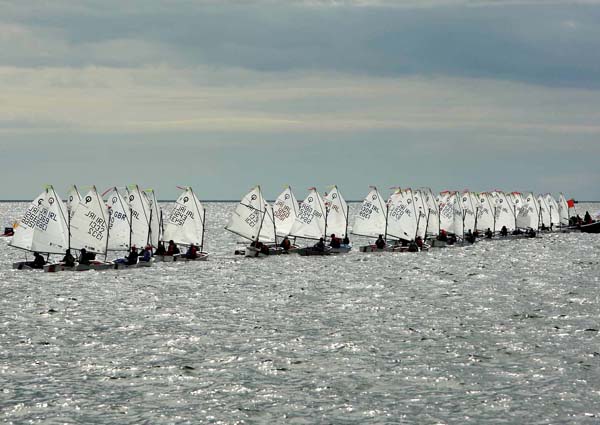
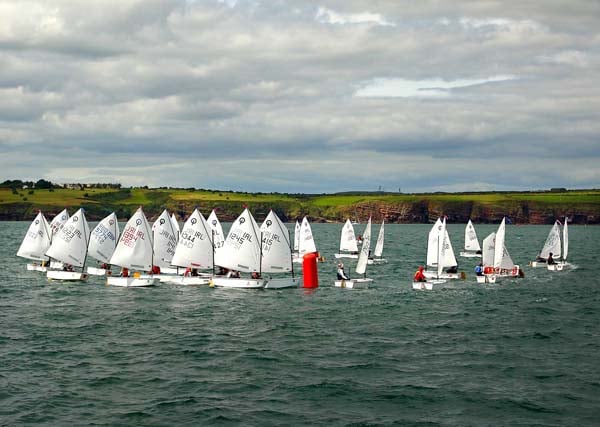
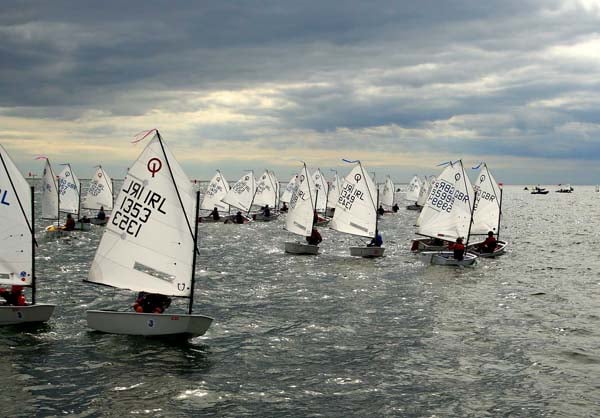
More on the forum HERE


























